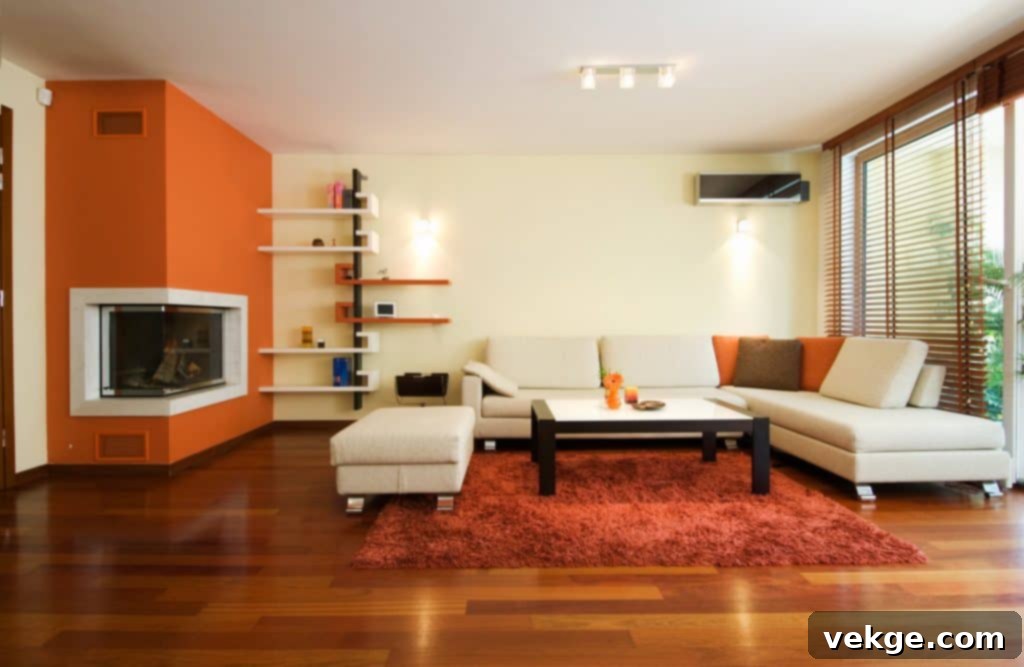Embracing a Smaller Home: A Comprehensive Guide to Successful Downsizing and Enriched Living
Life is a journey of constant evolution, and for many, this journey includes a pivotal moment when the cherished family home, once bustling with activity and memories, begins to feel less like a haven and more like an oversized commitment. Whether the children have flown the nest, personal circumstances have shifted dramatically, or a desire for a simpler, more manageable lifestyle takes hold, the idea of downsizing often emerges as an appealing, yet daunting, prospect.
The decision to embrace a smaller home is rarely made lightly. It frequently brings with it a complex tapestry of emotions, from the excitement of a fresh start to a palpable apprehension about leaving behind years of accumulated memories and the perceived comfort of a larger space. A common reservation revolves around the fear that a new, smaller residence might represent a step down in quality, luxury, or overall comfort compared to the current abode. Yet, with careful planning and a positive mindset, downsizing can unlock a world of benefits, offering a more focused, efficient, and often more fulfilling way of life.
Acknowledging these feelings is the first step. It’s natural to feel a reluctance to part with a home that holds such significant personal history. However, shifting your perspective from what you’re leaving behind to the incredible opportunities that lie ahead can transform this transition into an exciting adventure. Downsizing isn’t just about reducing square footage; it’s about optimizing your living environment to better suit your current and future needs, potentially enhancing your financial freedom, reducing maintenance burdens, and providing the perfect canvas for a truly bespoke lifestyle.
When Downsizing Becomes an Essential or Expedited Choice
While many individuals choose to downsize proactively for lifestyle improvements, there are instances where the decision becomes less about a conscious choice and more about a necessary adaptation to changing life circumstances. For example, situations like divorce often mean selling a house has become a necessity, requiring a swift and decisive approach to property division and resettlement. Similarly, unforeseen financial challenges, job relocation, or health considerations can unexpectedly accelerate the need for a more modest or accessible living space. In these urgent scenarios, the typical timeline for selling a home might be too slow, prompting individuals to explore alternative solutions, such as selling to an intermediary who can facilitate a quicker transaction.
Regardless of whether downsizing is a long-considered plan or an urgent requirement, it’s crucial to challenge the assumption that a smaller property inherently equates to a lesser quality of life. In fact, these situations can often be catalysts for discovering new and exciting possibilities. A smaller home, even one acquired under duress, can be just as, if not more, comfortable and enjoyable than your previous residence, especially when approached with intentionality and a vision for future happiness. It’s an opportunity to redefine your living priorities and create a space that perfectly aligns with the next chapter of your life, unburdened by the demands of a larger, perhaps less suitable, property.
Beyond Square Footage: The Power of Location
One of the most compelling advantages of downsizing is the potential it offers to significantly upgrade your lifestyle without necessarily increasing your overall housing budget. By opting for a smaller footprint, you might find that the financial savings or increased equity from your previous home can open doors to new possibilities, particularly concerning location. For instance, a more modest property could allow you to purchase a home in a highly desirable, prestigious, or vibrant neighborhood – a place you may have long dreamt of living but previously considered out of reach. This strategic move can dramatically enhance your daily life, placing you closer to amenities, cultural attractions, or simply a more engaging community.
Imagine living within walking distance of charming cafes, gourmet restaurants, or independent boutiques. Consider the convenience of having world-class parks, serene walking trails, or even a beautiful beach just a stone’s throw away. Even if you’re sacrificing a large private garden, easy access to green spaces or waterfront areas can more than compensate, offering expansive outdoor enjoyment without the associated maintenance burden. These community-focused amenities foster a sense of belonging and provide opportunities for recreation and social interaction that a larger, isolated property might lack. The accessibility to public transportation, medical facilities, and family or friends can also be significantly improved, adding unparalleled convenience to your daily routine.
Furthermore, from a long-term investment perspective, the importance of a prime location cannot be overstated. Property experts consistently agree that location is often the critical factor in determining a property’s value, desirability, and its potential for appreciation. A strategically chosen location can ensure a quicker sale at a better price should you decide to move again in the future, providing peace of mind and financial security. Therefore, downsizing strategically can be a powerful financial decision, allowing you to invest in a location that enriches your present while securing your future.

The Art of Decluttering: Choosing What to Keep and What to Let Go
Once the decision to downsize is firm, the practical challenge of fitting a lifetime’s worth of possessions into a smaller space comes into sharp focus. The thought of sorting through years of accumulated belongings can be overwhelming, often feeling like an insurmountable hurdle. Many fear that not having enough room for everything will significantly impact their comfort and lifestyle negatively. However, this stage of the downsizing process is, in essence, an unparalleled opportunity for personal growth and intentional living – a chance to curate your environment and truly surround yourself only with what brings you joy and serves a purpose.
Strategies for Mindful Decluttering
Approaching decluttering with a strategic mindset is key. Instead of viewing it as a chore, see it as an act of liberation. Start by categorizing your possessions: furniture, clothing, books, kitchenware, sentimental items, and general household goods. Take a methodical approach, tackling one category or one room at a time to avoid feeling overwhelmed. A helpful rule of thumb is the “one-year rule” – if you haven’t used an item in the past year, it might be time to let it go. For those items that hold sentimental value, consider digitizing memories where possible, such as old photographs or important documents, to preserve the memory without the physical bulk.
The core of successful decluttering for a smaller home lies in making deliberate choices about what truly matters. Instead of trying to fit everything, take a good, long look at what you own and consciously decide which items bring you the most pleasure, hold the most significant meaning, or are genuinely indispensable for your daily life. This could be a sturdy chest of drawers that has been passed down through generations, a unique piece of vintage furniture discovered at a flea market, or even a collection of books that inspire you. These are the pieces that define your personal style and tell your story; they deserve a place in your new home.
Curating Your New Space
Once you’ve identified these core, cherished pieces, aim to divest yourself of the rest. Be ruthless but compassionate with your choices. That flimsy IKEA wardrobe, for example, might not withstand another dismantling and reassembly, or it might simply not fit the aesthetic of your new, carefully curated space. Items that are broken, never used, or simply “filler” should be sold, donated, or responsibly recycled. This process not only reduces clutter but can also be financially rewarding, providing funds for new, perfectly scaled pieces for your smaller home.
Consider the scale and functionality of your remaining furniture. In a smaller home, every item needs to earn its place. Look for multi-functional pieces, such as ottoman storage, sofa beds, or tables that can expand. Embrace vertical storage solutions like tall bookshelves or wall-mounted shelving to maximize space. Think about the overall flow and aesthetic you want to create. A smaller home, thoughtfully arranged with meaningful possessions, can feel incredibly spacious, cozy, and reflective of your true self, rather than being cluttered with excess.
Designing for Compact Living: Maximizing Every Square Foot
Transitioning to a smaller home isn’t just about what you remove; it’s also about how intelligently you design and utilize the space you have. Smart design can make a compact home feel expansive and incredibly efficient. Begin by considering the layout. Open-plan living areas can create an illusion of greater space, promoting better flow and natural light. Strategic placement of mirrors can also visually enlarge a room, reflecting light and creating depth.
Color palettes play a significant role. Lighter colors on walls and ceilings can make rooms feel brighter and more open. Don’t be afraid to incorporate pops of color through accessories or a single accent wall to add personality without overwhelming the space. Lighting is another crucial element; layered lighting, including ambient, task, and accent lighting, can create warmth and define different zones within a smaller area. Embrace natural light as much as possible, opting for sheer curtains or blinds that allow sunlight to flood the rooms.
Furthermore, custom built-ins or modular furniture can be game-changers in smaller homes. Integrated storage solutions, such as built-in bookshelves, window seats with hidden compartments, or under-bed drawers, keep clutter out of sight and maintain a streamlined look. Furniture that can be easily moved or folded away when not in use, like nesting tables or pull-down desks, offers flexibility and adaptability for various activities. The goal is to make every square foot work harder for you, ensuring that your smaller home is not just functional but also a beautiful and comfortable sanctuary.
Embracing a New Lifestyle: The Freedom of Less
Beyond the physical aspects of moving and organizing, downsizing represents a profound shift in lifestyle and mindset. It’s an invitation to embrace minimalism, not as a deprivation, but as a path to greater freedom and focus. With less space to maintain, you’ll discover more time and energy for pursuits that genuinely enrich your life – hobbies, travel, social connections, or simply enjoying moments of quiet reflection. Reduced utility bills, lower property taxes, and potentially a smaller mortgage payment translate into significant financial freedom, opening up possibilities for new experiences or bolstering your savings for the future.
Adjusting to a smaller living environment often encourages more intentional consumption and a greater appreciation for experiences over possessions. You might find yourself spending more time outdoors, exploring your new neighborhood, or engaging with your community. This shift can lead to a more sustainable lifestyle, reducing your environmental footprint and fostering a deeper connection to your surroundings. Ultimately, downsizing isn’t an end point but a vibrant new beginning. It’s about shedding the excess to make room for what truly matters, allowing you to live your best life, every single day, in a space that perfectly reflects your refined aspirations and newfound freedom.
